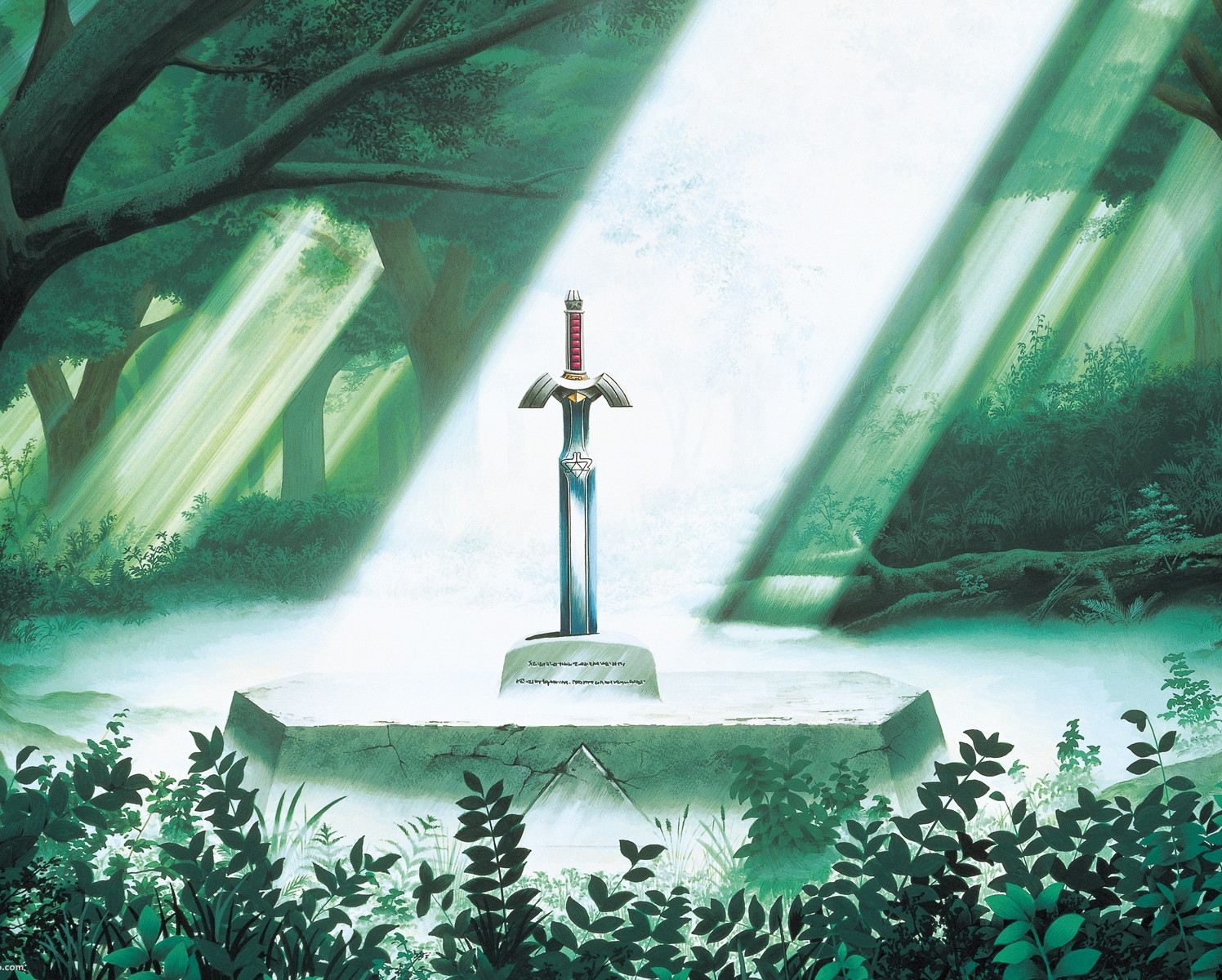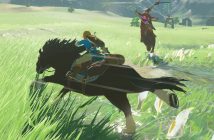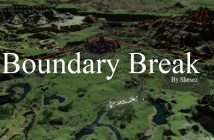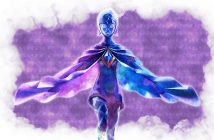In his classic explication of the socio-religious phenomenon, Shamanism, renowned scholar of religion Mircea Eliade writes that “The pre-eminently shamanic technique is the passage from one cosmic region to another,” (Eliade 259). Shigeru Miyamoto’s The Legend of Zelda game series allows its players a glimpse into the power of the shaman by offering control of its hero, Link, during his adventures between cosmological worlds. Link remains enigmatic through every game and in each of his forms; we players know very little about his ‘lineage,’ which is to say about those who had come before him in his auspicious bloodline, and yet something about his powers and abilities feel strangely familiar. Following brief explications of etymology and the Legend of Zelda’s Hylian lore, this essay will present the hero’s ability to pass “from one cosmic region to another” in A Link to the Past alongside pieces of Eliade’s history of Shamanism as evidence supporting an interpretation of Link as an archetypal shaman. This essay is the first in a series that will track the shamanic content of The Legend of Zelda through each of its installments in order to illuminate new depths of the hero’s context and complexity.
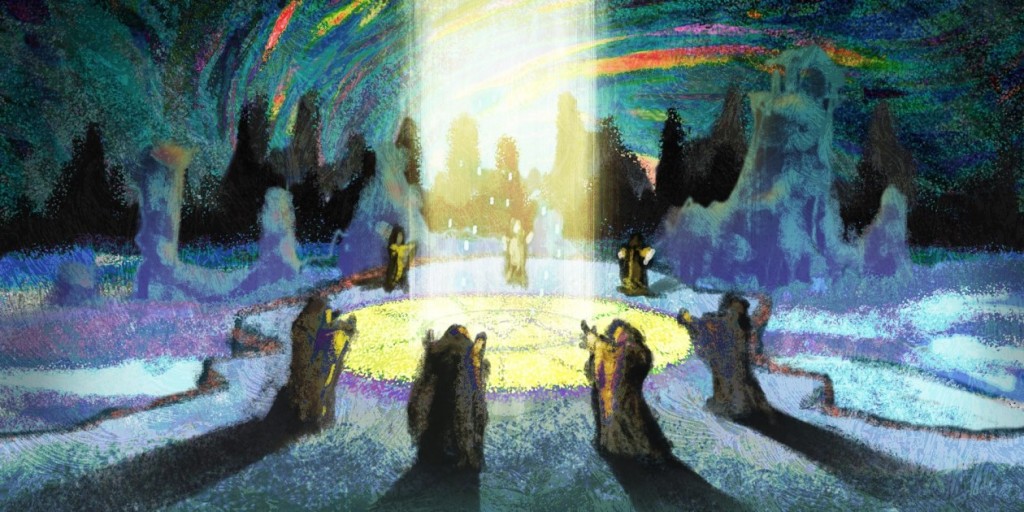
Let us begin our inquiry with the shamanic implications of Link’s name. The verb form of ‘link’ means, literally, to connect, join, or unite. It appears as a noun in the title of A Link to the Past, meaning ‘connection’, as well as referring to the character himself. However groan-worthy the play on words, the pun’s existence suggests that Link’s name was chosen intentionally to describe his characteristic function – connection – within the larger Legend of Zelda cosmology. Link, then, is within countless ranks of fictional characters all named after their distinguishing actions, dating back at least as far as Chaucer’s mill-operator named ‘Miller’ and every other character from his late 1300’s classic Canterbury Tales.
Though his name alone suggests an affinity for unification and connection, let us now look to the history of Link’s ancestral lineage and the abilities afforded to those in his bloodline, beginning with the original telepathic plea for rescue from Princess Zelda in A Link to the Past.
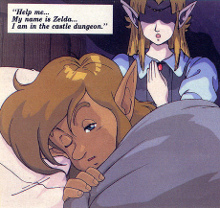
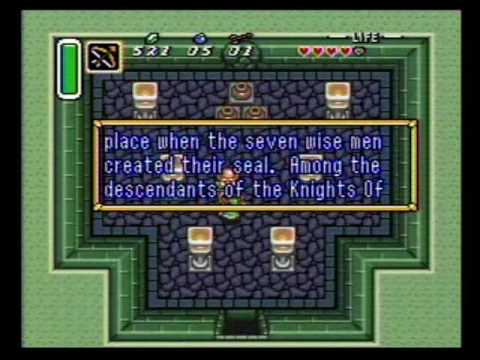
This clairaudience is the first indication of Link’s extrasensory abilities, and the game’s instruction manual provides a brief explanation for its hero’s ancestrally-inherited telepathy:
With their magic infused blood, the Hylian people were endowed with psychic powers and skill in wizardry. It was also said that their long pointed ears enabled them to hear special messages from the gods, so they were held in high esteem by many people in Hyrule.
Link’s auspicious Hylian blood, then, is the source of any and all of his psychic and magical abilities (other than, of course, those many powers which come from Link’s possession of magical artifacts, such as the Lens of Truth or Magical Rod). The mythology and lore surrounding Link’s ancestors, the Hylia, grows ever richer with detail and complexity with each subsequent Legend of Zelda title, but for the purposes of this essay it will suffice to know that Link’s extrasensory powers and abilities are all the result of his Hylian ancestry.
Eliade writes that “a shaman is not recognized as such until after he has received two kinds of teachings: ecstatic (dreams, trances, etc.) and traditional (shamanic techniques, names and functions of spirits, mythology and genealogy of the clan, secret language, etc.)” (Eliade 13). He is quick to note that the traditional teachings may materialize as messages from spirits within ecstatic states, rather than from interactions with other living shamans (Eliade 13). Eliade’s description of shamanic power and its dissemination, then, has space for a hero such as Link; who often learns of his esoteric powers simply by being asked to wield them by Impa, or any other who is familiar with the forgotten lore of Link’s extinct Hylian ancestors. Shamans such as Link, those seemingly bound by fate, whom have “obeyed the ‘call’ of the gods and spirits,” Eliade suggests, are thought to be greater in power than those who outwardly seek teachings (Eliade 13).
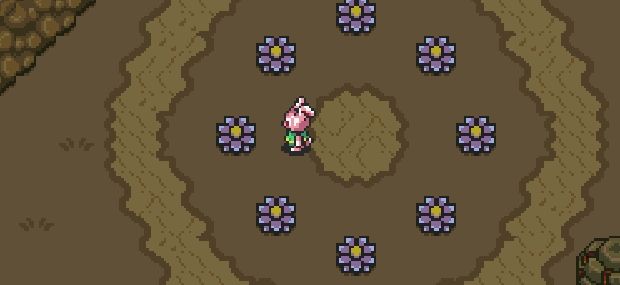
Link’s first shamanic journey, which is to say his first time traveling between cosmic worlds, occurs in A Link to the Past, just before he enters the Tower of Hera on Death Mountain. He steps onto a platform with esoteric markings and is immediately transported to what is called The Dark World. Upon arrival in The Dark World, Link’s form changes from human to that of an anthropomorphized, pink hare incapable of wielding any item other than the Magic Mirror, recently obtained from an ancestor of one of the seven sages who helped to seal Ganondorf out of the Light World. By gazing into the Magic Mirror, Link can travel back to the Light World and his human form. Later in the game, Link is able to return to the Dark World in his own body thanks to his discovery of a talisman called the Moon Pearl.
Before pressing further into Link’s cosmological trips between the Light and Dark Worlds, it will be helpful consider how Eliade might have processed what has already been mentioned. The Tower of Hera (Ganon’s Castle in The Dark World) atop Death Mountain is a glaring example what Eliade calls a “central World Pillar,” atop a “Cosmic Mountain,” (Eliade 269). Non-shamans build and maintain these tall, central World Pillars on top of naturally-occurring hills or mountains to serve as auspicious locations for ritual offerings to the celestial gods, and shamans, in turn, use the World Pillar as a sort of launch-pad for their personal, ecstatic ascent to celestial worlds. Both locations are considered spiritually significant due to their ‘highness’ and closeness to the ‘heavens.
“The presence of a helping spirit in animal form, dialogue with it in a secret language, or incarnation of such an animal spirit by the shaman,” asserts Eliade, “is another way of showing that the shaman can forsake his human condition,” (Eliade 93). In other words, Link’s transfiguration proves that the essence of his being is capable of traveling not only between worlds, but between beings – which helps a bit in explaining why there are different ‘Links’ at different points in space-time within the Legend of Zelda‘s cosmology. Eliade also refers to the hare as being the quintessential “lunar animal,” across numerous shamanic cultures, which adds depth, if not relevance, to the Moon Pearl’s function when held by Hare Link in The Dark World. Regarding the ritual use of mirrors, Eliade suggests that despite some diversity in magical signifcance across shamanic cultures, “the mirror is said to help the shaman to ‘see the world’ (that is, to concentrate), or to ‘place the spirits,’ or to reflect the needs of mankind, and so on,” (Eliade 154).
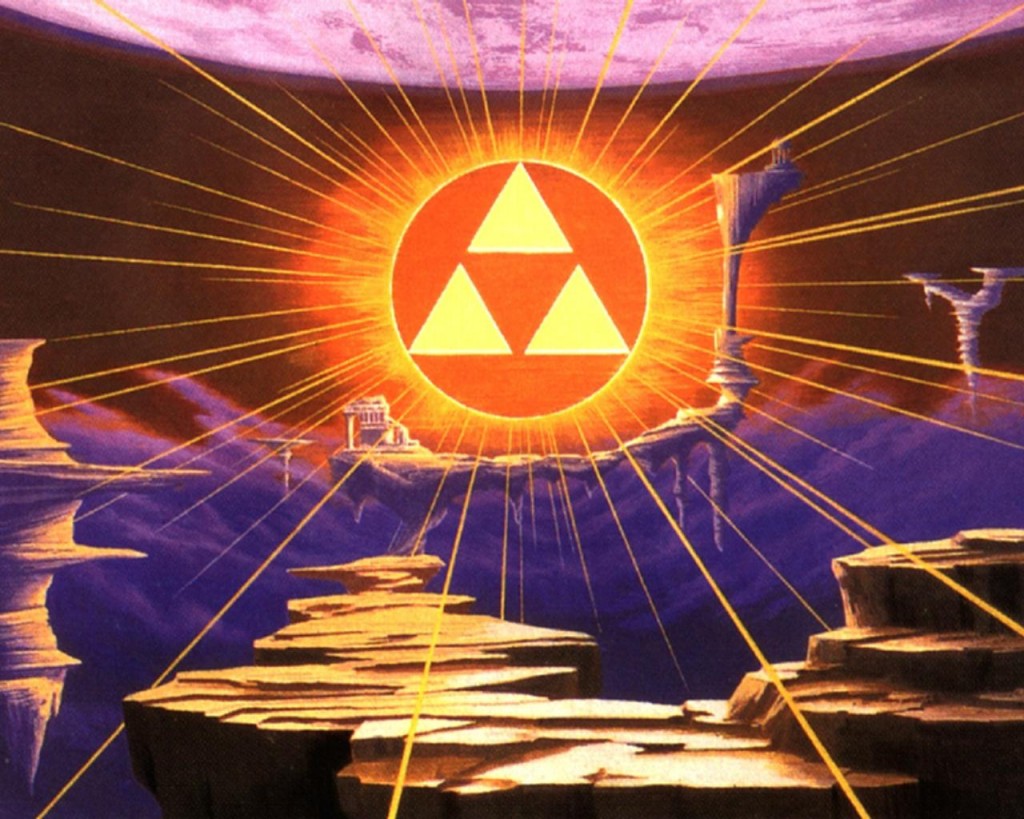
Before the Dark World was the Dark World, it was the home of the Triforce, the Sacred Realm. Though it may have been defiled and corrupted by Ganon’s evil, the Dark World is actually a spiritually higher, more auspicious cosmological space than the Light World, which is ostensibly a digital, fictionalized version of the world which you and I inhabit. This is an important detail because it means that in A Link to the Past, Link never descends to any kind of ‘underworld’ as Eliade might describe (this is saved for later titles in the series), rather his journey to the tainted Sacred Realm is always one of ascension. It also illuminates the depth of the crisis facing Hyrule, in that Ganon has already gained control of the Sacred Realm and seeks only to spread his evil past the ‘Link’ between worlds – a connection which we can understand to be twofold: the sage’s seal as well as Link’s physical person (remember the groan-worthy pun?).
“After the interruption of the easy communications[Eliade’s italics] that, at the dawn of time, existed between mankind and the gods, certain privileged beings (and first of all shamans) preserved the power to actualize, for their own persons, the connection with the upper regions,” Eliade expounds (Eliade 265). This is precisely the cosmology of A Link to the Past, with the gods being the creators of the universe and Triforce , the privileged beings cast as the Hylia (and therefore Link), the seven sages, the Knights of Hyrule, Ganon/Agahnim. Those individuals with the ability to travel between the Sacred Realm and The Light World, namely Link and Ganon/Agahnim, are the foremost shamans of A Link to the Past.

If we remove the magic, fantasy, and shamanism from Link’s adventure, we are left with a bleak, human reality: a young orphan is called upon by nobility to set out on a lifelong quest to gain experiential knowledge of his inherited magical powers and abilities (with which he possesses zero experience), in hopes that he might effectively learn and employ them fast enough to save the universe from impending doom and evil.
If that sounds remarkably similar to the plot of Star Wars: Episode IV, that is because IT IS the exact plot of Star Wars: Episode IV, and perhaps every other hero story ever told. The familiarity of Link’s and Luke’s struggles are infinitely accessible, not because of their fantastical or shamanic content, because they are unique incarnations of a singular, profoundly human experience; that of a hero’s journey through tribulations and terrors. In the words of World Mythology scholar, Joseph Campbell, each individual version of the hero’s journey “will always be one, shape-shifting yet marvelously constant story that we find, together with a challengingly persistent suggestion of more remaining to be experienced than will ever be known or told,” (Campbell 3).
Works Cited
Eliade, Mircea.Shamanism: Archaic Techniques of Ecstasy. Princeton, New Jersey: Princeton UP, 1972. Print.
Campbell, Joseph. The Hero With a Thousand Faces. Princeton, New Jersey: Princeton UP, 1973. Print.
Shaman or not, we can all relate to Link’s journeys through extreme adversity, his myriad travels between seemingly disconnected yet observably unified worlds, and his will to explore and understand the mystery of his being. What are your feelings towards Link and his connections with Shamanism? Let us know in the comments below.

